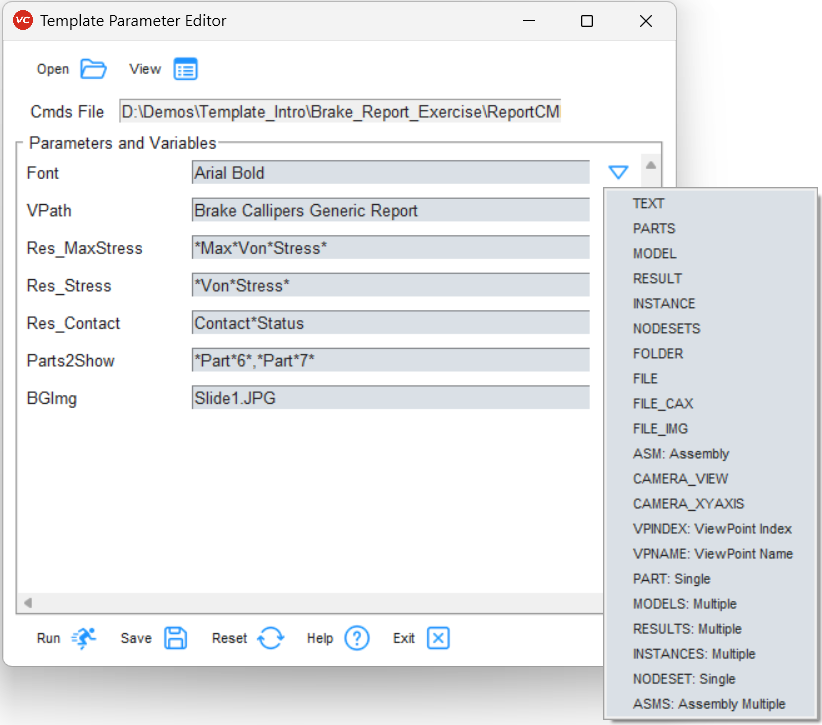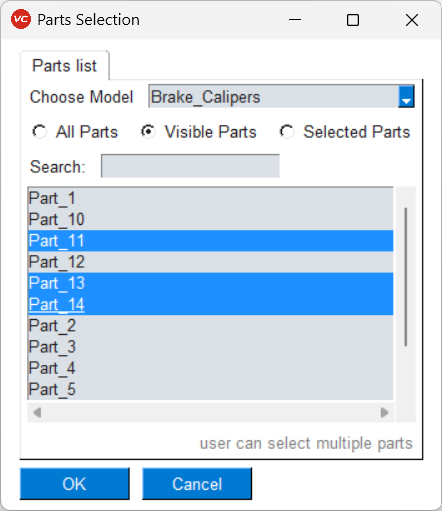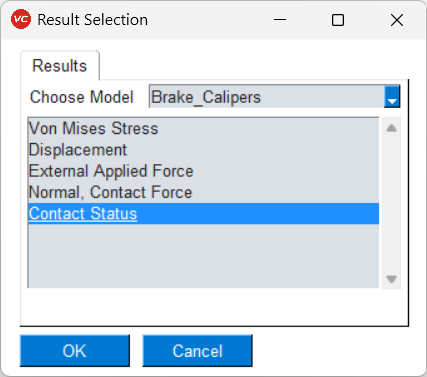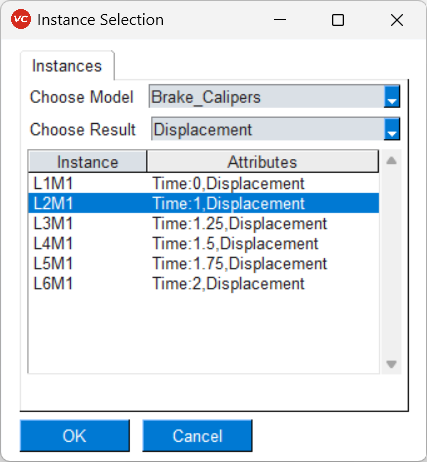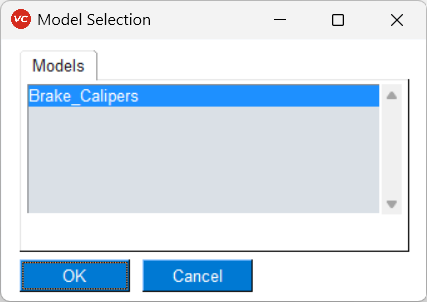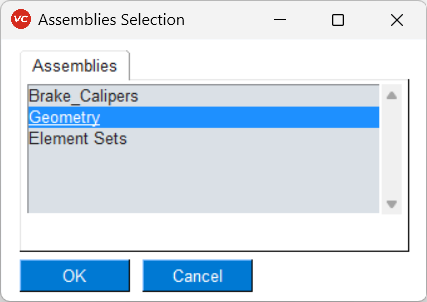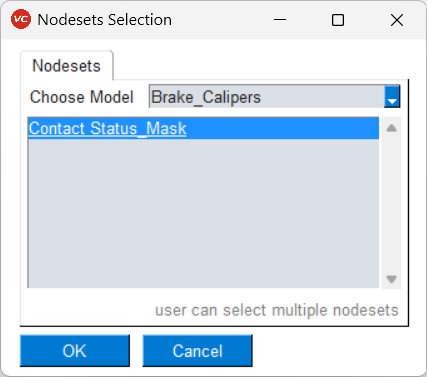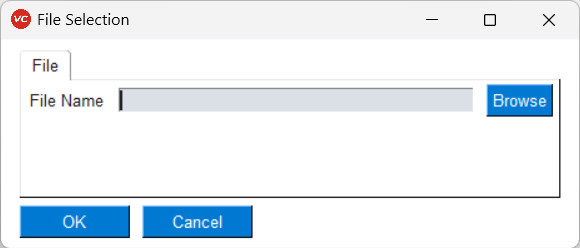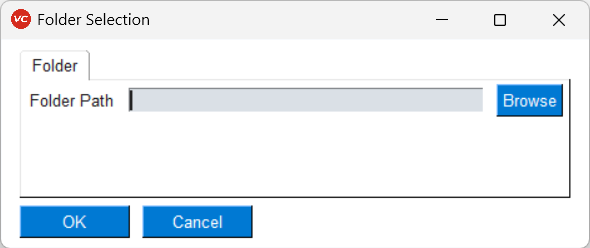Parameter Editor GUI
An example of a parameterised Command Template is shown below. It has SET_VAR and PARAMETER commands that define variables and their values.
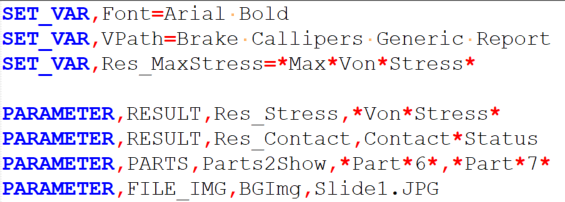
In order to run a Command Template interactively without changing other text in it, user can select the submenu Run Param Template from PY_Tools main menu of VCollab Pro or ProX. User can load a command template by selecting it in the browser. On Load following dialog is shown. The SET_VAR and PARAMETER variables are visible and available for user to update.
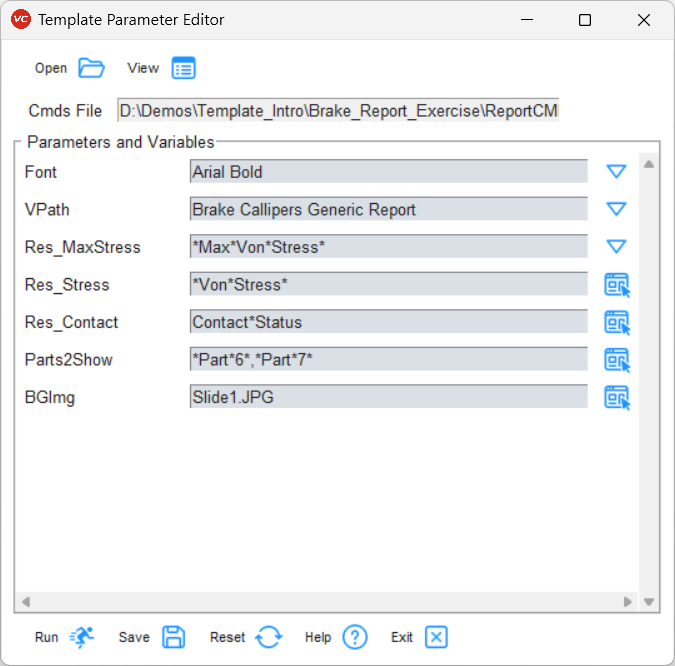
The dialog has following buttons:
 Open: Opens Load Template File dialog to select a report template file (.txt or .cmd or .csv). The already loaded command template will be discarded, along with any changes made to the value fields and new command template will be loaded. The main dialog will disappear for a moment before loading the new command template.
Open: Opens Load Template File dialog to select a report template file (.txt or .cmd or .csv). The already loaded command template will be discarded, along with any changes made to the value fields and new command template will be loaded. The main dialog will disappear for a moment before loading the new command template. View: Opens the loaded command template. User can review the entire text of the command template.
View: Opens the loaded command template. User can review the entire text of the command template. Run: Runs all commands in the command template with updated SET_VAR and PARAMETER values. The original text of the loaded command template is not altered.
Run: Runs all commands in the command template with updated SET_VAR and PARAMETER values. The original text of the loaded command template is not altered. Save: Saves all the updated SET_VAR and PARAMETER values. A Save Commands dialog will pop up for user to select new command template file.
Save: Saves all the updated SET_VAR and PARAMETER values. A Save Commands dialog will pop up for user to select new command template file. Reset: Resets all changed values to their original(or default) values.
Reset: Resets all changed values to their original(or default) values.
SET_VAR: The Key is shown as non-editable text and the value is an editable input field. User can directly update the value. An icon ![]() appears next the value field. On clicking it, a list of available options appears. User can choose which option is to be used to select from Cax interactively.
appears next the value field. On clicking it, a list of available options appears. User can choose which option is to be used to select from Cax interactively.
PARAMETER: Parameter Key is shown as non-editable text and the value is an editable input field. User can directly update the value. An icon ![]() appears next to the value field. On clicking it, an appropriate dialog appears for user to choose from Cax interactively.
appears next to the value field. On clicking it, an appropriate dialog appears for user to choose from Cax interactively.
As can be seen in the example, SET_VAR has no type defined, hence user has to first select it for dialog to appear. The PARAMETER already has a defined type, hence an appropriate dialog appears. Examples shown below.
Parts |
Result |
Instance |
|---|---|---|
Model |
Assembly |
Nodesets |
|---|---|---|
File |
Folder |
Text |
|---|---|---|


